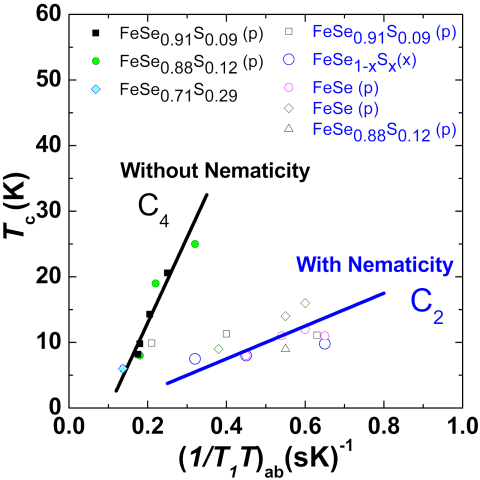
The understanding of the interplay between magnetic fluctuations, electronic nematicity and the nature of superconductivity in unconventional superconductors is one of the central issues in modern condensed matter physics. From extensive studies, antiferromagnetic fluctuations are believed to play an important role for the appearance of unconventional superconductivity.
Although the role of nematicity on superconductivity is also discussed extensively, the effects on the relation between antiferromagnetic fluctuation and superconductivity has never been reported before. Using 77Se nuclear magnetic resonance (NMR) measurements on sulfur-doped FeSe under pressure, this relationship was revealed to change with the presence/absence of nematicity. In addition, it was shown that four-fold rotational symmetric (C4) AFM correlations are better in enhancing Tc than two-fold symmetric (C2) AFM correlations.
This discovery gives a novel insight into the relationships between nematicity, antiferromagnetism and superconductivity. This provides new insight into the mechanism behind the appearance of superconductivity in the iron based superconductors, giving a strong impact in the fields of superconductivity and strongly correlated electron systems.
K. Rana, L. Xiang, P. Wiecki, R. A. Ribeiro, G. G. Lesseux, A. E. Böhmer, S. L. Bud'ko, P. C. Canfield, and Y. Furukawa, “Impact of nematicity on the relationship between antiferromagnetic fluctuations and superconductivity in FeSe0.91S0.09 under pressure” Physical Review B Rapid Communication (Editors’ suggestion), 2020 101, 180503(R). DOI: 10.1103/PhysRevB.101.180503
